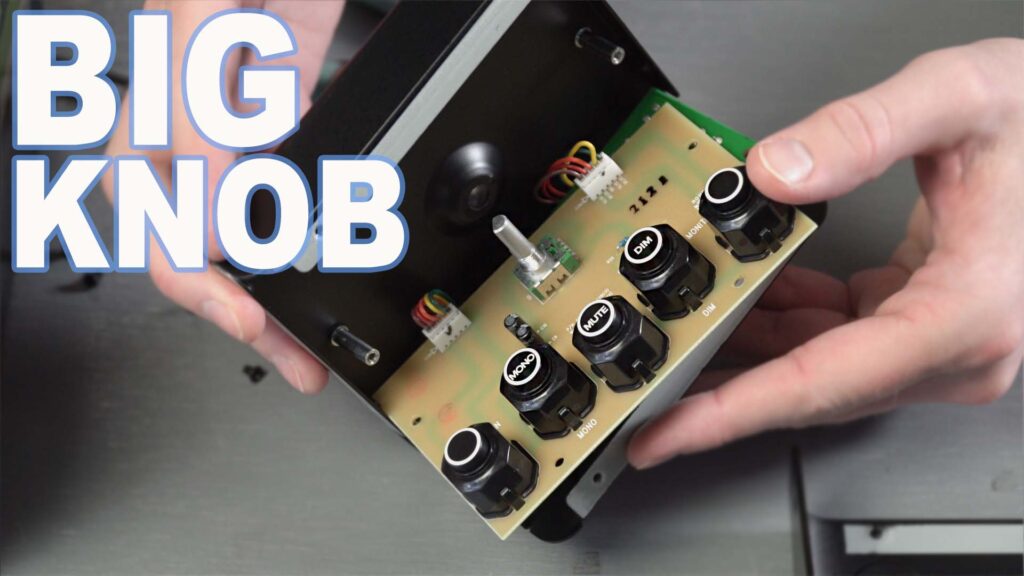As an Amazon Associate DcSoundOp earns from qualifying purchases.
The Mackie Big Knob Passive is a simple piece of audio gear. It doesn’t require any sort of power supply or batteries, and it doesn’t come with any apps either. If you’re getting into monitor controllers for the first time, the range of prices and features available can be daunting. While there are many cheap options like this, you could spend thousands of dollars easily on a monitor controller. So how do you know what you need?
In this video we’ll go through all of the features on the very basic passive model of Mackie’s Big Knob. There are audio examples included along the way, so you can hear for yourself what is happening during operation. Though the results you’ll see are generally not an issue for most users, they do illustrate where there is room for improvement in this type of design. Making and breaking connections in analog audio circuits they way they are doing here, simply creates noise. You’ll hear snaps, pops, and other weird anomalies in these examples, and that’s just how it goes with simple switching.
Unfortunately the answer isn’t as simple as finding an active controller versus this passive version. Active relay switched units like the Audient Nero seem to get their share of complaints about loud audible popping too. Maybe we need to get one of those in for some tests to compare side by side. It might be a while before we can justify pulling in anything from Dangerous Music, Audient or Grace to test here on the channel. However, if you’ve got the budget and want no compromises in your monitoring setup, there are plenty of options available for even the most critical ears.
Hopefully these examples will help you decide what type of monitor controller is best for your situation.

If this video was helpful & you’re shopping for a Big Knob, check out this affiliate link for current pricing – https://amzn.to/3a98wup. For more information about the Dante system from this video, check out our Dante playlist. There are other audio networks you’ll run into besides Dante too. There are lots of situations where you might find AVB networked hardware in use, or some other flavor all together.
It is important to remember that audio networks are there to transport signals like a copper wire would. There is no processing, muting or mixing provided by the network itself. Even re-patching things in a live network can take a moment to accomplish. However, the convenience of network routing, lossless splitting and lighter cabling are some of the reasons it has become so popular.
If you’re new to networking, check out John Huntington’s book Introduction to Show Networking to get started learning. Once you’re up and running, you’ll find lots of situations where a simple volume or mute switch like this can be necessary.
Amazon and the Amazon logo are trademarks of Amazon.com, Inc, or its affiliates.
